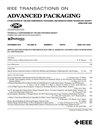A Novel High-Capacity Electromagnetic Compression Technique Based on a Direct Matrix Solution
引用次数: 0
Abstract
Electromagnetic solvers based on integral equations in conjunction with the method of moments or the partial element equivalent circuit method (PEEC) proved to be popular because of their efficiency and accuracy. There is one serious drawback of the integral equation approach: it often leads to a linear system involving a full matrix. Many efficient approaches have been proposed to overcome this, largely based on compressing the matrix-vector product operation and using an iterative solver. Iterative EM solvers, however, suffer from slow convergence, which does not have a totally reliable method to address; further, large multiple right-hand sides significantly increase the solving time. In this paper, we present a novel method to compress low rank sub-block matrixes into sparse matrix to be used with a direct sparse matrix solver to obtain an efficient high-capacity electromagnetic solver based on an integral equation formulation. The full-rank system matrix is represented in a hierarchical matrix format that has its sub-matrixes compressed with numerically controllable accuracy; it is then analytically converted to a sparse matrix which is further solved by a direct sparse matrix solver. Analytically this method results in O(N (log N)2) complexity for computing the inverse of a hierarchical matrix presented in Fig. 2 where N is the number of unknowns.一种基于直接矩阵解的新型大容量电磁压缩技术
基于积分方程的电磁求解器与矩量法或部分单元等效电路法(PEEC)相结合,以其效率高、精度好而广受欢迎。积分方程方法有一个严重的缺点:它经常导致一个包含满矩阵的线性系统。已经提出了许多有效的方法来克服这个问题,主要是基于压缩矩阵向量乘积运算和使用迭代求解器。然而,迭代EM求解器收敛速度慢,没有完全可靠的方法来解决;此外,大的多个右手边显著地增加了求解时间。本文提出了一种将低秩子块矩阵压缩成稀疏矩阵的新方法,并将其与直接稀疏矩阵求解器结合使用,得到了一种基于积分方程公式的高效高容量电磁求解器。该全秩系统矩阵用层次矩阵格式表示,其子矩阵被压缩,精度可控制;然后将其解析转换为稀疏矩阵,再用直接稀疏矩阵求解器求解。解析地说,这种方法的结果是O(N (log N)2)复杂度,用于计算如图2所示的层次矩阵的逆,其中N是未知数的数量。
本文章由计算机程序翻译,如有差异,请以英文原文为准。
求助全文
约1分钟内获得全文
求助全文

 求助内容:
求助内容: 应助结果提醒方式:
应助结果提醒方式:


